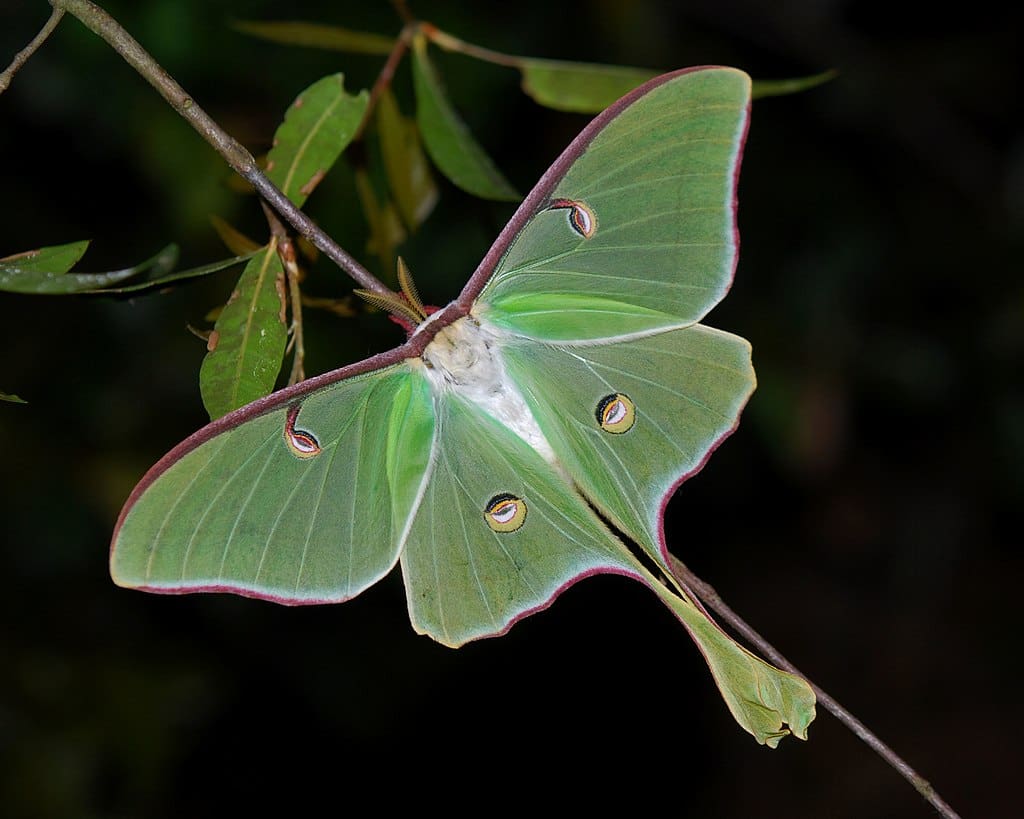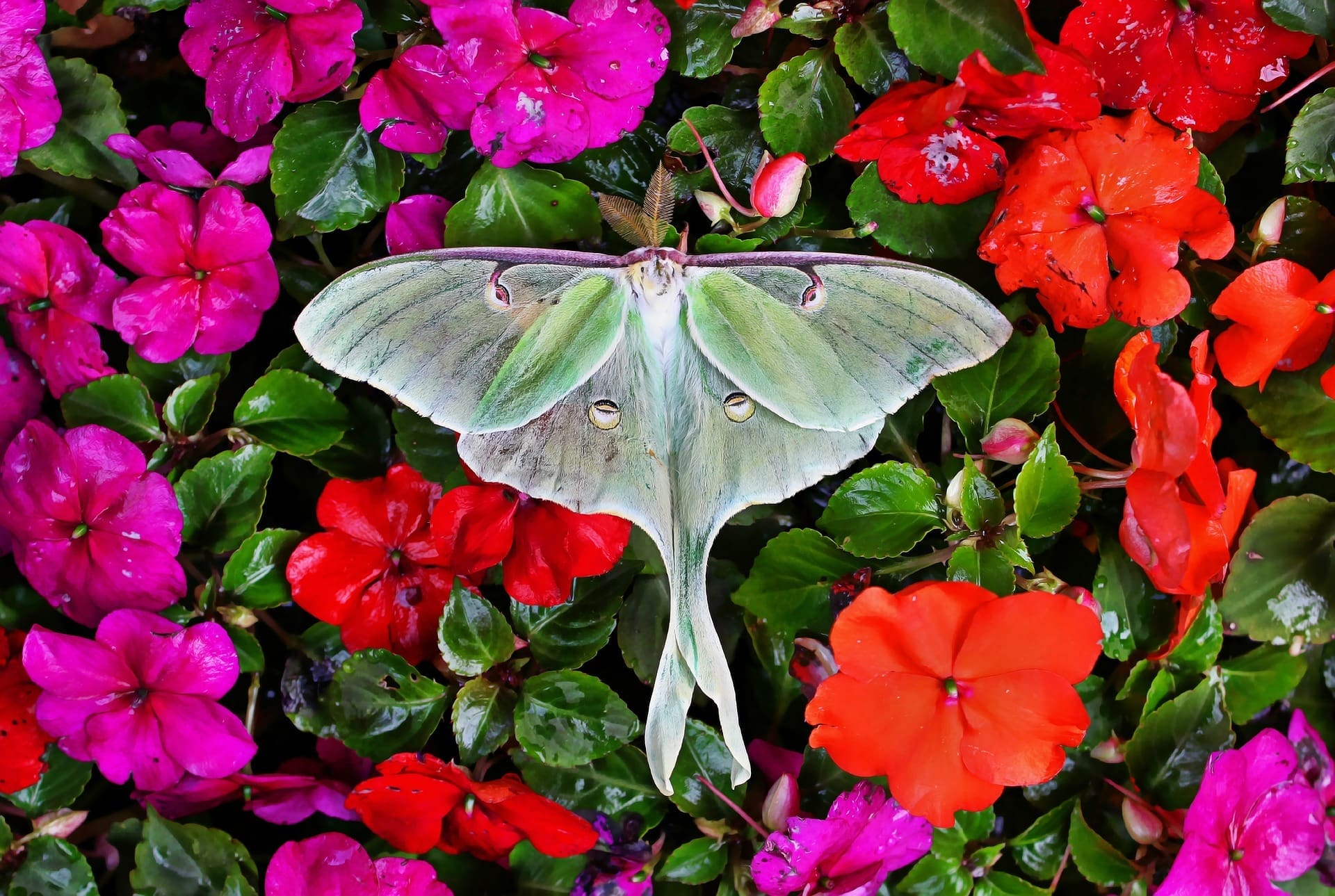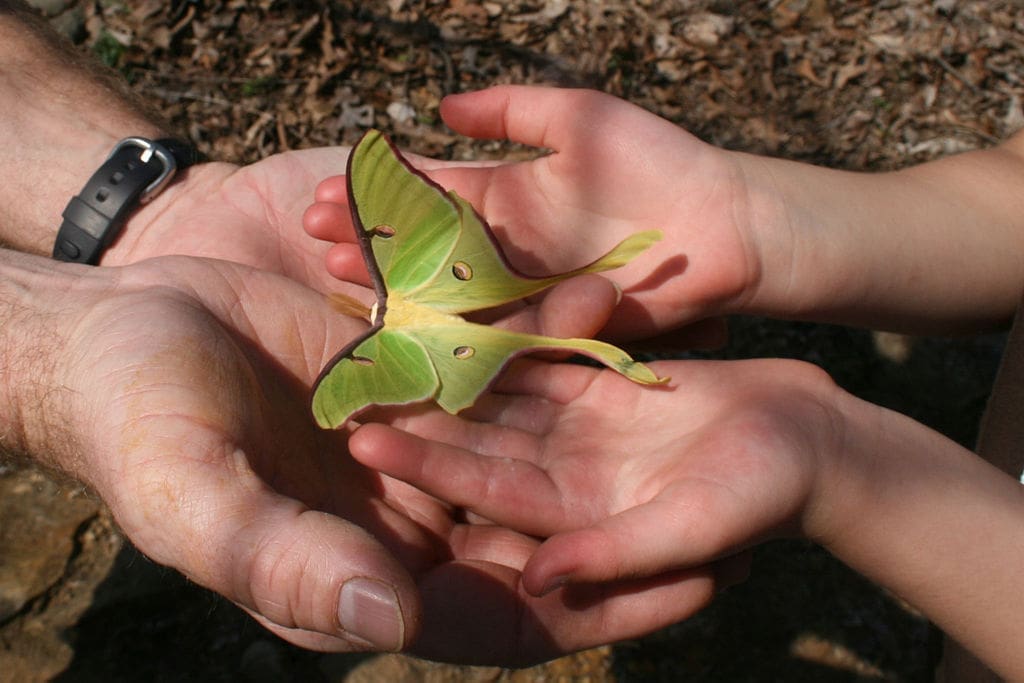What nocturnal creatures native to North America are known for their beauty and the fact that they don’t eat at all in their adult life?
Luna moths!

As the movement to restore native biodiversity grows, we are seeing trends like No-Mow May, Leave the Leaves, and pollinator-friendly gardens gain popularity as ways to support the intricate web of biodiversity. Often, part of the campaign for preserving and nurturing these essential soil-plant-insect-animal interactions involves highlighting some of the charismatic creatures who stand to benefit from rewilding efforts. If you are looking for a creature to champion in the work for native biodiversity, look no further than the Luna Moth!

When I was little I used to think the woods were magic. I read Enid Blyton’s The Magic Faraway Tree and imagined what fantastical creatures I might meet if I got to wander through the forest. For the most part, my adventures were confined to chasing fireflies in New York City parks, but that was enough to convince me I was onto something. Those lucky enough to meet the tree-dwelling luna moth might agree, because these big bright fluttering beauties would fit right into any fantasy setting.
The luna moth, or Actias luna, is a species of giant silk moth endemic to North America. It is known for its distinctive shape, green color, and shockingly long wingspan of up to 7 inches! In discussing the biodiversity we are fighting for by restoring landscapes and rewilding our built environment, the lovely luna moth has come up several times for the sheer wonder it brings people. Like a real-life tinkerbell, this intricate insect inspires us with its beauty and shows how much transformation a single individual can undergo in a lifetime.
While many animals (and particularly insects), can challenge our human perspective of time with their fleeting life spans, the luna moth takes this to new extremes. Not only do adult luna moths live for just a week, but they have a very clear purpose in that time to mate and reproduce. They are so single-minded that they don’t undertake one of the other major activities of the natural world – eating! The luna moth emerges from its cocoon with all the energy needed to carry out its week of mature adult life.
Though it may be brief, the luna moth’s existence, from egg to adult stage, with all the growth and survival that entails, is anything but simple.

A lesson in metamorphosis
Like other moths and butterflies, luna moths undergo a dramatic transformation in their life cycle from their humble beginnings as eggs. After approximately 10 days, they hatch into their larval stage on the underside of the leaves where they were laid. Caterpillar larvae actually undergo several stages of molting in which they grow in size and change in appearance, sporting spots and changing color from a bright green to a darker yellow or orange. They cocoon themselves after several weeks as larvae, entering the pupal stage for 2-3 weeks before finally emerging as the beautiful moths we’ve come to recognize.
With a name derived from the latin word for moon, these nocturnal creatures can be observed during the evening in late Spring or early Summer, depending on the region. While they range from Canada to Florida in areas east of the Great Plains, the timing and duration of their life cycles vary by location and climate. Indeed, Northern populations of luna moths have just one generation per year, while further South in warmer conditions, they’ve been known to have as many as three generations per year.

As caterpillars, luna moth larvae feast on the leaves of the trees they call home. They love several species of broadleaf trees, including walnut, hickory, sumac, and sweet gum. While they can be Very Hungry Caterpillars, voraciously consuming leaves to grow, populations of luna moths tend not to reach a density that starts to harm their host plants. Instead, they are a beautiful feature of the ecosystems of trees that they dwell in, and themselves become food for other species, including birds, bats, and some parasitic flies.
Survival with a flourish
The adult luna moth uses a very special survival strategy to evade bats who are out hunting at night. While their green camouflage might keep them safe from predators relying on eyesight to hunt, they need to try something different to out-maneuver a bat’s echolocation. The long curved tails of the luna moth serve just this purpose. When under pressure from a bat’s pursuit, luna moths spin the frills at the end of their tails, disrupting the vibrations through the air that help the bats navigate and giving moths an essential boost in getting away. These beautiful features offer the moth both form and function.

The luna moth is a stunning example of the creativity, elegance, and transience of the natural world. While a single luna moth may not live very long, their impact persists across generations, inspiring naturalists young and old who are lucky enough to catch a glimpse. These creatures are one of many reasons to keep preserving and planting native trees. When we do, living wonders await.
With that, I’ll flutter off for now!
Maya

Maya Dutta is an environmental advocate and ecosystem restorer working to spread understanding on the key role of biodiversity in shaping the climate and the water, carbon, nutrient and energy cycles we rely on. She is passionate about climate change adaptation and mitigation and the ways that community-led ecosystem restoration can fight global climate change while improving the livelihood and equity of human communities. Having grown up in New York City and lived in cities all her life, Maya is interested in creating more natural infrastructure, biodiversity, and access to nature and ecological connection in urban areas.
Sources:
https://www.fllt.org/goddess-of-the-moon-the-life-history-of-the-luna-moth/
https://hgic.clemson.edu/factsheet/luna-moth/
https://en.wikipedia.org/wiki/Luna_moth
https://www.smithsonianmag.com/science-nature/luna-moths-gorgeous-wings-throw-bat-attacks-180954281/


